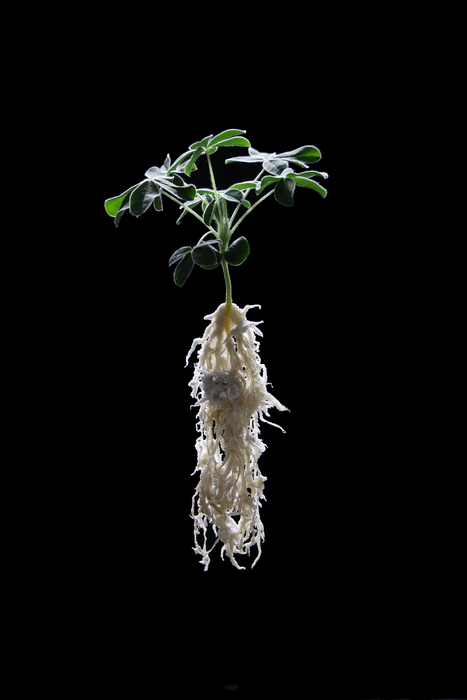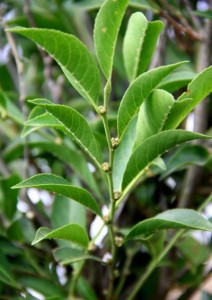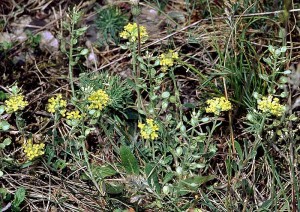Is anyone else reminded of Arsène Lupin? (More about Lupin later in this posing)
An August 24, 2021 news item on ScienceDaily describes research on soils and phytoremediation (decontamination by plants),
Pollution of soils with highly toxic arsenic is a worldwide problem generating substantial risks to human health and the environment.
In Canada, over 7000 sites contaminated with metals such as arsenic are considered ‘highly concerning’ by the government, with some past and recent mining operations and wood preservative facilities having left their mark on the environment by increasing soil arsenic levels by up to 1000 times the maximum regulatory health limits.
One way in which arsenic contaminated soils could be rejuvenated is to exploit natural mechanisms which have evolved in certain plants for contamination tolerance.
“The legume crop white lupin (L. albus) is one such arsenic tolerant plant species being studied as for sustainable remediation,” explains Adrien Frémont, lead author of the study and a doctoral student in biological sciences at the Université de Montréal. “The mechanism behind arsenic tolerance in white lupin is thought to be the release of plant chemicals directly into soil by roots, but the nature of these compounds is unknown and hard to study due to the complexity of these belowground interactions.”

An August 24, 2021 University of Montreal (Université de Montréal) news release (also on EurekAlert), which originated the news item, describes the work in more detail,
Root chemicals an undiscovered country
To study this, the team developed nylon pouches which could be placed close to roots in soil to capture exuded molecules without damaging the root system. The complex mix of molecules collected from these pouches were analysed using advanced (metabolomic) chemical profiling to identify the compounds capable of binding metals produced by the Lupin plants in response to high concentrations of arsenic. Some of these metal-binding molecules, phytochelatins, are known to be used internally by plants to deal with metal stress but have never before been captured as exuded into polluted soils.
“We’re really excited to see how matching new root-soil sampling approaches with advanced metabolomic profiling can yield such unexpected discoveries”, notes Frémont. “We know that plants can drastically change soil properties and can transform or immobilise soil pollution, but the chemistry underlying how they achieve this, and in particular the makeup and function of root-exuded compounds, is still very much an undiscovered country.”
Plant roots directly altering polluted soils
The next steps of the research are to branch out into more detailed analysis of the precise chemical reactions taking place at the root-soil interface, including exploration of different plant species, interactions with microorganisms and the challenge of diverse soil pollution.
As Dr. Nicholas Brereton, University of Montreal and the study’s senior author, mentions: “It can be a real challenge to research the complex interactions going on belowground between plants and soil, but these findings are rewarding in telling us that natural mechanisms have evolved in plants to deal with this type of pollution. Although we’re still only just beginning to scratch below the surface of how these plant root strategies work, as we learn more, we can potentially utilise these natural processes to improve soil health and help to alleviate some of the most persistent anthropogenic damage to our environment.”
Here’s a link to and a citation for the paper,
Phytochelatin and coumarin enrichment in root exudates of arsenic-treated white lupin by Adrien Frémont, Eszter Sas, Mathieu Sarrazin, Emmanuel Gonzalez, Jacques Brisson, Frédéric Emmanuel Pitre, Nicholas James Beresford Brereton. Plant Cell & Environment DOI: https://doi.org/10.1111/pce.14163 First published: 15 August 2021
This paper is behind a paywall.
For anyone interested in phytoremediation, I have a March 30, 2012 posting about it and there’s this Wikipedia entry. Depending on the circumstances, you might also consider phytoremediation as a form of phyto-mining, i.e., using plants to recover metals from mine tailings (see my March 5, 2013 posting).
Arsène Lupin
There are two of them (the first and the latest ones) being mentioned here; but there are many versions of Arsène Lupin in manga, anime, movies, etc.
The first fictional Arsène Lupin was created in 1905 by Maurice Leblanc. Here’s a description (on the Normandie tourisme website) of the first Lupin in an article about the latest Lupin, a series streamed on Netflix.
…
Maurice Leblanc was born in Rouen in 1864. Fascinated by legends of witches, Celts, Romans and the Vikings growing up, Leblanc would go on to develop a deep knowledge of and love for the region around Rouen, known as the Pays de Caux. After working in a factory in Rouen by day, writing only in his spare time, Leblanc eventually left his home town to study in Paris, where he then started working as a journalist for several publications including Le Figaro. Fate then struck, as publisher Pierre Lafitte launched the magazine Je sais tout and commissioned Leblanc to write a series of new crime stories where the hero would be a sort of French anti-Sherlock Holmes.
Who was the original Lupin? Not unlike Lupin in the TV series, the Arsène Lupin of the books was a thief, a master of disguise, a rascal but never a killer, a hit with the ladies and a righter of wrongs who takes from the rich, a French Robin Hood if you like. He takes on a multitude of personas in the books, constantly changing his looks and his name – examples include Prince Paul Sernine, Raoul d’Andrésy, Horace Velmont and Don Luis Perenna. In the [Lupin] series [2021], this is echoed by Assane’s alter-egos Paul Sernine, Luis Perenna and Salvatore813, as well as his choice of name for his son, Raoul. Yet superman Lupin, both in the books and on screen, always manages to triumph somehow over his enemies, even when all seems lost, through bending the rules, outsmarting the police and sheer self-belief.
You can find out more about the latest Lupin in its IMDb entry,
Inspired by the adventures of Arsène Lupin, gentleman thief Assane Diop sets out to avenge his father for an injustice inflicted by a wealthy family.
The television series starring Omar Sy was a huge hit in France and has been seen worldwide.

